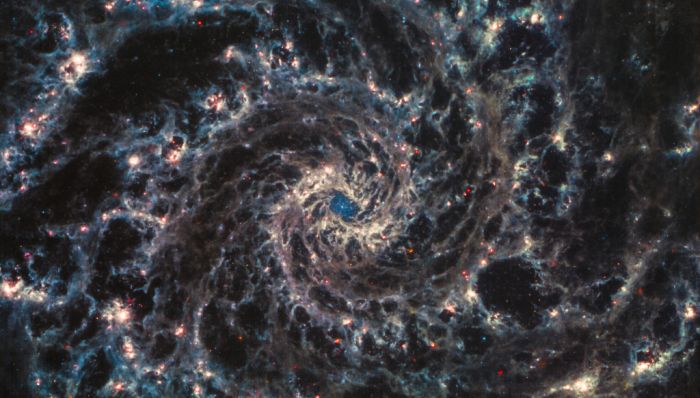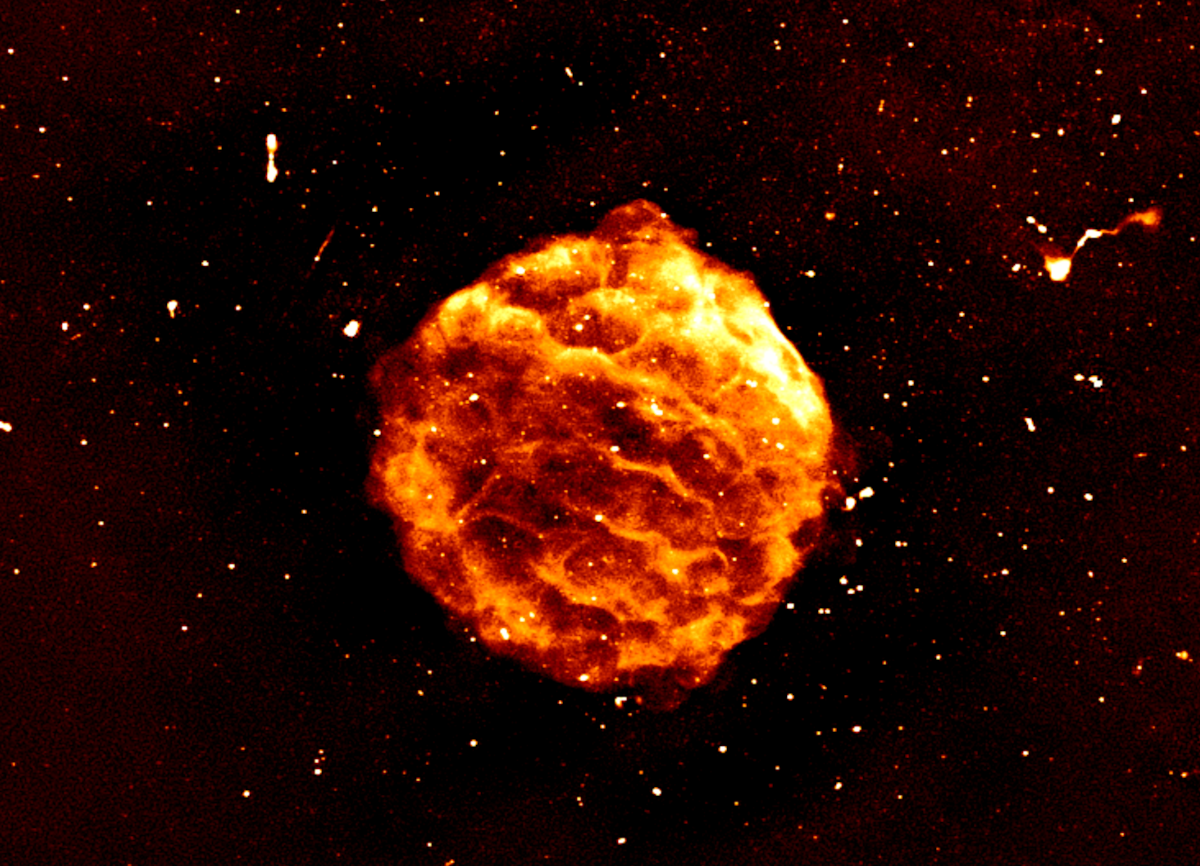-
 universeness
6.3k
universeness
6.3k
It's a shame you can't find (or you remain unwilling to find) enough hope in yourself to condemn the antinatalists based on the 'hope springs eternal,' example the James Webb project exemplifies. -
 Wayfarer
25.9kinformation-gathering tiny probes. — universeness
Wayfarer
25.9kinformation-gathering tiny probes. — universeness
that's the only kind of payload, as far as interstellar travel is concerned. You're never going to get carbon-based lifeforms to another star system, it's strictly sci-fi. (In fact, I think it's the sublimated longing for the Heaven we no longer believe in.) -
 Agent Smith
9.5kIt's a shame you can't find (or you remain unwilling to find) enough hope in yourself to condemn the antinatalists based on the 'hope springs eternal,' example the James Webb project exemplifies. — universeness
Agent Smith
9.5kIt's a shame you can't find (or you remain unwilling to find) enough hope in yourself to condemn the antinatalists based on the 'hope springs eternal,' example the James Webb project exemplifies. — universeness
So it is. -
 universeness
6.3kthat's the only kind of payload, as far as interstellar travel is concerned. You're never going to get carbon-based lifeforms to another star system, it's strictly sci-fi. — Wayfarer
universeness
6.3kthat's the only kind of payload, as far as interstellar travel is concerned. You're never going to get carbon-based lifeforms to another star system, it's strictly sci-fi. — Wayfarer
Sure we can. Time is vast in quantity. Even a simple idea like building a space station transit system may take us a million years but that million years will pass anyway and transhumanism means we don't have to remain purely carbon-based. Sci-fi often eventually becomes sci-fact. There are plenty of examples of that from the past so why not in the future. -
 Wayfarer
25.9kDon't agree. I'm an adherent of 'spaceship Earth' theory - that we have the only spaceship we're ever going to get, capable of supporting billions of people for a very long while, but it's dangerously over-heating and resource-depleted. Every last bit of energy and ingenuity has to be focused on that, otherwise in a million years Earth will be only a prospect for some clever alien paleontologist (or pathologist.)
Wayfarer
25.9kDon't agree. I'm an adherent of 'spaceship Earth' theory - that we have the only spaceship we're ever going to get, capable of supporting billions of people for a very long while, but it's dangerously over-heating and resource-depleted. Every last bit of energy and ingenuity has to be focused on that, otherwise in a million years Earth will be only a prospect for some clever alien paleontologist (or pathologist.) -
 Agent Smith
9.5kMost passerines hop, but others, such as larks, pipits, starlings, and meadowlarks, typically stride. Within the family Corvidae, jays hop whereas crows stride. Diverse species, including robins, ravens, and blackbirds, both hop and stride. — Stanford
Agent Smith
9.5kMost passerines hop, but others, such as larks, pipits, starlings, and meadowlarks, typically stride. Within the family Corvidae, jays hop whereas crows stride. Diverse species, including robins, ravens, and blackbirds, both hop and stride. — Stanford
:snicker: -
 Agent Smith
9.5kspaceship Earth — Wayfarer
Agent Smith
9.5kspaceship Earth — Wayfarer
:up:
We must figure out the secrets of gravity propulsion - that's the only force that's found in abundance in outer space. Can we focus it (gravity "waves", LIGO) or can we select which gravity well we want our spaceships to respond to? Gravity, unfortunately, is weak at large distances? Maybe we can amplify the signal like how radio telescopes do that to weak radio signals (we may need a gravity "antenna"). :snicker: -
 magritte
573For comparison, here is Hubble's image of the same galaxy M74 in Pisces
magritte
573For comparison, here is Hubble's image of the same galaxy M74 in Pisces
The two pictures show somewhat different views and need to be digitally overlapped for an even more spectacular image if that is possible.
https://esahubble.org/images/heic0719a/ -
 jorndoe
4.2kGyroscopes in space (Mar 19, 2016; 1m:18s)
jorndoe
4.2kGyroscopes in space (Mar 19, 2016; 1m:18s)
↑ Demonstrating somewhat counter-intuitive gyroscope in zero gravity.
Wikipedia » Spacecraft bus (James Webb Space Telescope) » Gyroscopes
NASA » General Questions about Webb
NASA » Technical FAQ on a variety of mission issues, aspects and capabilities. -
 Manuel
4.4kHow frequently will James Webb be releasing images? I know that a new one came out, concerning some purple-ish looking galaxy.
Manuel
4.4kHow frequently will James Webb be releasing images? I know that a new one came out, concerning some purple-ish looking galaxy.
But since the initial release of these batches of images, I haven't seen many more. I can't seem to find a date for such image releases. Anybody know about this? -
 Agent Smith
9.5kThose who report being star-struck/in awe of the JWST images have, in my humble opinion, missed the point of this project by precisely 93 billion light-years! :rofl:
Agent Smith
9.5kThose who report being star-struck/in awe of the JWST images have, in my humble opinion, missed the point of this project by precisely 93 billion light-years! :rofl: -
 180 Proof
16.4k
180 Proof
16.4k
I'm surprised there aren't more frequent micrometeor strikes on satellites and space craft given that the (inner) Solar System is a veritable debris field. -
 magritte
573Something hadta go wrong! :groan: — Agent Smith
magritte
573Something hadta go wrong! :groan: — Agent Smith
They could be parked in a convenient but busy location. There's a lot of tiny debris that gets caught and swirls about in those gravitational low spots. -
 noAxioms
1.7kThe furthest object ever seen had been GN-z11 for a long time, but that record had been broken last April or so, finding something at z=13.7 after review of data through several other telescopes.
noAxioms
1.7kThe furthest object ever seen had been GN-z11 for a long time, but that record had been broken last April or so, finding something at z=13.7 after review of data through several other telescopes.
JWST has now taken the crown, finding something sexily named "CEERS-93316" with a redshift of z=16.6 ±0.1
https://arxiv.org/pdf/2207.12356.pdf
About the hit to the mirror:
Strikes are actually quite common, and returning spacecraft (not even up there that long) are sometimes found with small holes. It was the size of the JWST strike that seemed to be very improbable.I'm surprised there aren't more frequent micrometeor strikes on satellites and space craft — 180 Proof
Anything caught in that low spot would be moving very slowly, else it would not be in that low spot. This object was not caught there, nor is the spot particularly attractive to random objects. It could have happened anywhere.There's a lot of tiny debris that gets caught and swirls about in those gravitational low spots. — magritte -
 Agent Smith
9.5k
Agent Smith
9.5k
Micrometeroids! Like viruses, itty-bitty things that can do lotsa damage! I guess this is the small but terrible era!
We all have our little problems. — Mr. Hyde (Van Helsing) -
 magritte
573Anything caught in that low spot would be moving very slowly, else it would not be in that low spot. This object was not caught there, nor is the spot particularly attractive to random objects. It could have happened anywhere. — noAxioms
magritte
573Anything caught in that low spot would be moving very slowly, else it would not be in that low spot. This object was not caught there, nor is the spot particularly attractive to random objects. It could have happened anywhere. — noAxioms
Relatively speaking, how slow is slow and how fast is fast? -
 noAxioms
1.7k
noAxioms
1.7k
Slow is not even zero.Relatively speaking, how slow is slow and how fast is fast? — magritte
Nothing is stable at L2, so nothing accumulates there. JWST, once its fuel runs out, will eventually drift away. So the thing that hit it isn't part of the collection that gathers there since there is no such collection.
I read that it requires about 15-100 (depending on your calculations) m/sec/year of delta V to maintain its position there. That's one of the primary reasons for the limit of around 11 years for the JWST lifetime. It cannot be refueled or refurbished like Hubble can. -
 Agent Smith
9.5kNothing is stable at L2, so nothing accumulates there. — noAxioms
Agent Smith
9.5kNothing is stable at L2, so nothing accumulates there. — noAxioms
Most interesting. — Ms. Marple
So Lagrange points aren't like regions in a stream for example where the flow of water (gravity) "slows down", allowing sediments to settle down/accumulate? -
 magritte
573JWST’s “Shrodinger’s Galaxy Candidate” Has Astronomers Very Puzzled
magritte
573JWST’s “Shrodinger’s Galaxy Candidate” Has Astronomers Very Puzzled
CEERS-1749 is either the earliest and most distant galaxy ever seen by a long way, or an imposter looking curiously far more distant than it really is.https://arxiv.org/abs/2208.02794
The data suggests two potential locations for the CEERS-1749
Rohan Naidu ~~~ It isn’t always the excitement, sunshine, and rainbows often perpetuated through the media. Challenging current knowledge takes bravery and the collective hard work of dozens, if not hundreds, of passionate scientists. All options must be examined for the truth to be revealed."
Welcome to The Philosophy Forum!
Get involved in philosophical discussions about knowledge, truth, language, consciousness, science, politics, religion, logic and mathematics, art, history, and lots more. No ads, no clutter, and very little agreement — just fascinating conversations.
Categories
- Guest category
- Phil. Writing Challenge - June 2025
- The Lounge
- General Philosophy
- Metaphysics & Epistemology
- Philosophy of Mind
- Ethics
- Political Philosophy
- Philosophy of Art
- Logic & Philosophy of Mathematics
- Philosophy of Religion
- Philosophy of Science
- Philosophy of Language
- Interesting Stuff
- Politics and Current Affairs
- Humanities and Social Sciences
- Science and Technology
- Non-English Discussion
- German Discussion
- Spanish Discussion
- Learning Centre
- Resources
- Books and Papers
- Reading groups
- Questions
- Guest Speakers
- David Pearce
- Massimo Pigliucci
- Debates
- Debate Proposals
- Debate Discussion
- Feedback
- Article submissions
- About TPF
- Help
More Discussions
- Other sites we like
- Social media
- Terms of Service
- Sign In
- Created with PlushForums
- © 2025 The Philosophy Forum













